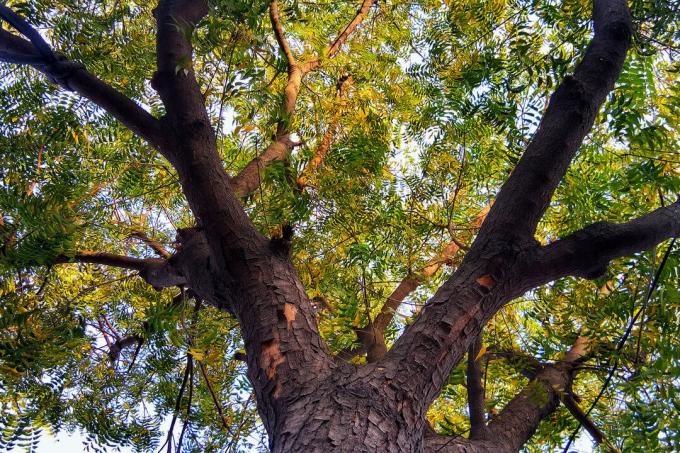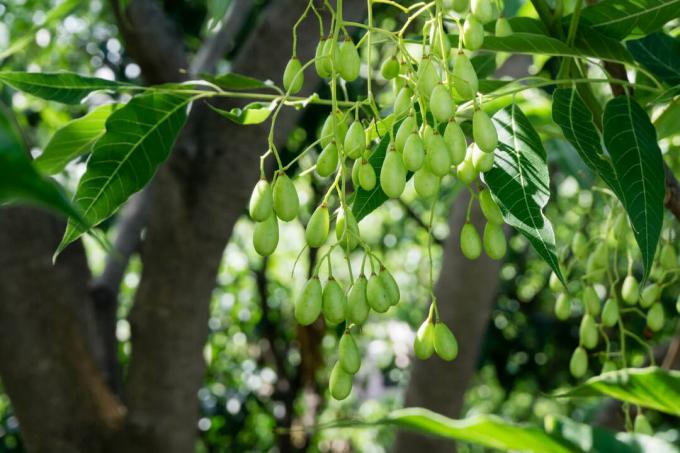The neem tree is a very special tree. We at Plantura introduce you to the valuable effects and possible uses (neem oil) of neem.

The neem tree (also called neem or margosa) is a very interesting plant that has been used in Ayurvedic medicine for well over 1000 years in its homeland. The tree belongs to the mahogany family and feels very comfortable in subtropical to tropical climates. The valuable thing about the tree is its many ingredients, some of which have not yet been researched. Since the highest concentration of the ingredients is in the seeds, these are particularly valuable.
Properties of the ingredients
The active ingredients of the neem tree have a very broad spectrum of activity. Among other things, they help with viral diseases, fungal infestation, mites and especially against insects. In the case of insect infestation, neem has proven itself against the following pests in particular:
- Mealy apple aphid
- Whitefly
- Thrips
- Leaf miner
Neem supplements are even used against locusts. In the case of insects, the effect is based on the fact that the pests stop eating and are hindered in their development.
Another plus point is that some ingredients from the neem tree have a systemic effect. This means that the active ingredients are absorbed by the plant and distributed in the plant. This means that even hidden pests can be combated. Interestingly, the active ingredients are not that dangerous for most beneficial insects, and fortunately, this also applies to bees. Aquatic organisms also usually have no problem with the ingredients. In addition to beneficial insects, the agent is also very well tolerated by almost all plants. When using the product, however, you should always follow the information in the package insert for the product.

Application of neem
If you prefer not to experiment with neem meal, which we will talk about in a moment, you can use our tried and tested ready-made preparation Plantura organic pest-free neem To fall back on. An alternative to the finished products are crushed or ground neem seeds. These are soaked in water for at least 24 hours (50 grams per 1 liter of water). The infected plants can then be watered or sprayed with the water extract produced. Since the active ingredients work better in direct contact with the pests, spray treatment is preferable. Some gardeners also mix the meal directly into the soil when transplanting. This is intended to slowly absorb the active ingredients into the plant and provide long-term protection. Neem press cakes are also available in stores. With these, the oil of the seeds and with it the active ingredients have already been pressed out. The product is therefore not suitable for plant protection; but as a good organic fertilizer.
Furthermore, when using it, it should be noted that the water extract should not be sprayed in extreme heat and direct sunlight. Because the ingredients are quickly broken down by UV radiation and can then no longer work.
Important: According to the Federal Office for Consumer Protection and Food Safety, neem oil is classified as safe for cats. However, some scientific studies have shown that neem oil treatment can lead to more or less severe malaise and clinical symptoms such as tremors and cramps in individual cats. For this reason, we recommend that you isolate plants treated with neem preparations for the duration of the waiting period from cats, if possible.
